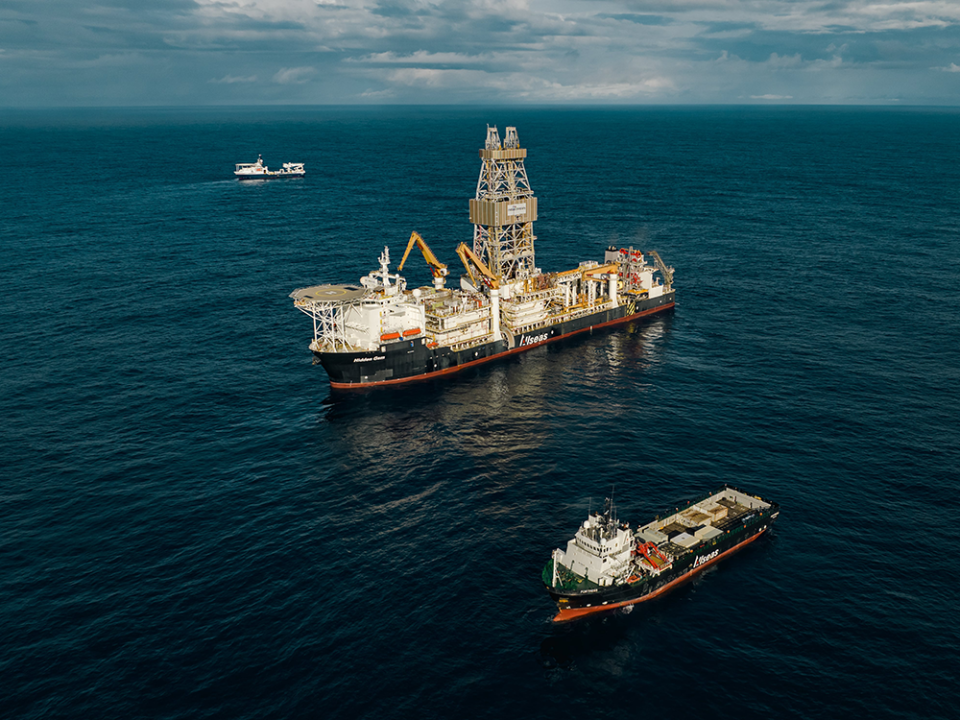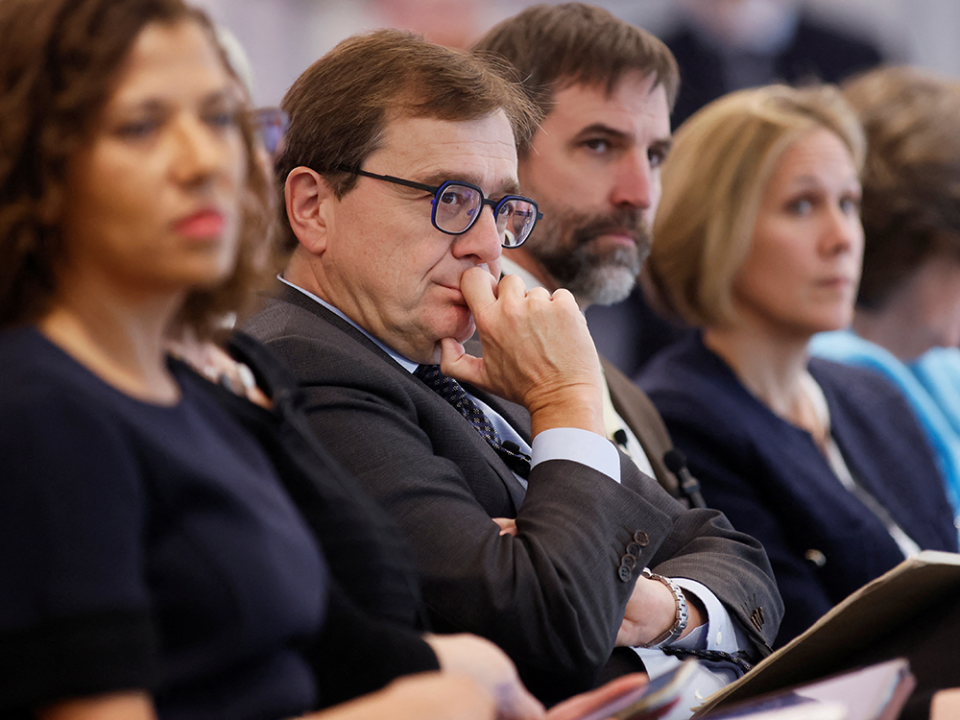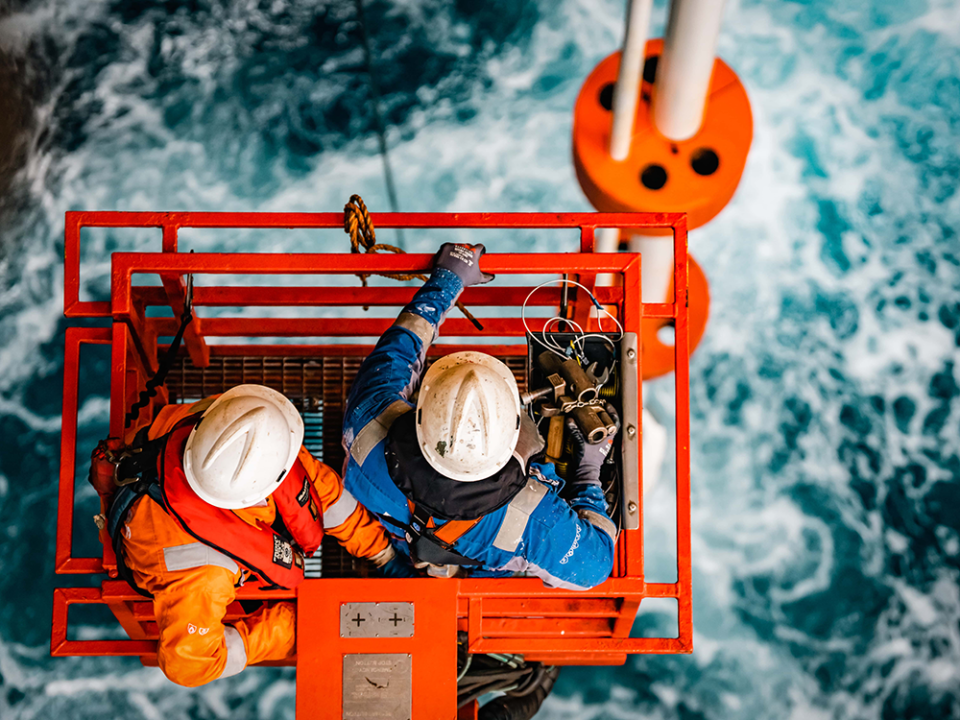Canadian company in race to mine ocean floor unmoved by Ottawa's ban on seabed mining

The Canadian government this month banned mining in its oceans — and that’s just fine by the Vancouver-based company that is on track to become the world’s first deep-sea miner.
“That was no surprise to anyone. We are not interested in that,” said Gerard Barron, chief executive of The Metals Co., or TMC. “We are only interested in our licence areas, which is in the Clarion Clipperton Zone, a thousand miles off the coast of Mexico in the Pacific Ocean.”
The realization that Ottawa’s tough talk will do little to slow the companies in the vanguard of an emerging sub-sector of the mining industry bolster critics who described the federal government’s order as hollow. At the same time, the reluctance of lawmakers to put a stop to deep-sea mining suggests Barron’s argument that he can help fight climate change is resonating with officials who have made neutralizing carbon emissions a priority.
Barron argues that the world’s increasing demand for metals needed to build electric vehicles and renewable energy infrastructure, such as nickel, cobalt and copper and to tackle climate change can be better met by deep-sea mining as opposed to land mining, since the former doesn’t include “ripping up rain forests,” “generating a lot of waste” and “pushing out Indigenous communities.”
Those arguments would resonate with Prime Minister Justin Trudeau, who has put the environment, climate change, and reconciliation at the centre of his agenda.

Nonetheless, on Feb. 9, Jonathan Wilkinson, the natural resources minister, and Joyce Murray, the fisheries minister, issued a joint statement that said Canada wouldn’t authorize seabed mining within its jurisdiction because it didn’t have in place a domestic legal framework. The ministers suggested they were skeptical that seabed mining should be done anywhere, given the risks to natural habitat and the relative lack of knowledge about life on the ocean floor.
“Seabed mining should only take place if effective protection of the marine environment is provided through a rigorous regulatory structure, applying precautionary and ecosystem-based approaches, using science-based and transparent management, and ensuring effective compliance with a robust inspection mechanism,” the statement said.
The statement added that Canada would negotiate in “good faith on regulations to ensure that seabed activities do no harm to the marine environment and are carried out solely for the benefit of humankind as a whole.”
`Total alignment’
For his part, Barron said he was in “total alignment” with the Canadian government.
Deep-sea mining concerns the extraction of minerals from the ocean floor at depths of 200 metres or more. While it has never been done, several companies are exploring regions and testing the mining process. Miners plan to use robots to excavate the ocean floor and then pump the minerals up to a ship. The waste water and the debris would be pumped back into the ocean and the collected materials, which include minerals, would be processed on land.
By 2024, TMC hopes it can start mining a section of the seabed situated in an area between Mexico and Hawaii that it’s currently exploring for metals such as nickel, cobalt, copper and manganese — all key inputs in the making of batteries and other technology that will be necessary to electrify the economy.
However, the company still needs a permit from the International Seabed Authority (ISA), an autonomous body under the United Nations that regulates the exploration and exploitation of seabed minerals in international waters.
TMC hopes to get approval by the end of this year. On a test basis, the company already has collected 3,000 tonnes of nodules, which are potato-like objects present in the seabed sediment, often partly or completely buried, that contain valuable metals.
The ISA, which has has so far issued about 30 exploration contracts, aims to finalize regulations that miners will have to follow to conduct deep-sea mining by July, a spokesperson said. However, the deadline is not rigid and “further work may be needed after the deadline to finalize” decisions, the spokesperson said.
`Paucity of rigorous scientific information’
Some environmentalists and scientists have criticized the intent of authorities to sanction this new form of mining, arguing that more research is required before the seabed is so violently disturbed.
For example, more than 700 marine science and policy experts from 44 countries have called for a “pause” to deep-sea mining due to the “irreversible” loss it might cause to the ecosystem. “There is a paucity of rigorous scientific information available concerning the biology, ecology and connectivity of deep-sea species and ecosystems, as well as the ecosystem services they provide,” the statement read.
Some, including the Deep Sea Conservation Coalition, a collection of 100 charities, criticized Canada’s deep-sea mining statement and urged Prime Minister Justin Trudeau to be more ambitious.

The coalition’s director, Sian Owen, said that while Wilkinson and Murray used the term “effective moratorium” several times at the International Marine Protected Areas Congress earlier this month, the written statement fell “short of that clarity and is thus potentially open to a much weaker interpretation.”
MiningWatch Canada’s Catherine Coumans said that removing the nodules – which take millions of years to form – could “wipe out the life of the deep seabed” and create a dead zone. She added that most scientific papers published on the issue agree that “we have just barely scratched the surface” of understanding the species that exist in the deep sea and that several more years of research was required to gather more information on its ecosystem.
Barron, however, said that it wasn’t logical to oppose deep-sea mining, since it was a “hundred per cent” more environment-friendly than mining on land. The world needs more metals such as nickel and copper to fight climate change by accelerating the transition away from fossil fuels, so best to dig for them where miners will cause the least amount of damage, he said.
“There is a crowd of people that like to get together and oppose new industries and new ideas,” Barron said. “Some of the faces that were opposing the nuclear industry back in the ’70s and ’80s are showing up in this industry as well. That’s what happens unfortunately.”
Mostly bacteria
TMC is exploring a region in the abyssal zone — one of the levels into which oceans are divided — at a depth of about 4,300 metres. There are no plants and 80 per cent of the fauna is bacteria living among the sediment, Barron said.
Compared with land mining, where Indigenous communities are affected, and harmful mining wastes get “dumped into the oceans” the “large abundant resource” area that his team is exploring was like a “dream,” he said.
“You either go with a low impact and no impact on human lives, or you go with an enormous impact on the ecosystem and environment of human lives,” said Barron.
Coumans of MiningWatch disagreed. She said the bacteria present in the deep sea “form the basis for the life” that exists there. “Those bacteria are critically important, plus they have not been studied at any extent and there’s so much research now on the health implications of bacteria that are being discovered now on Earth,” Coumans said. “Just because it’s small doesn’t mean that it’s not important.”
Agnico CEO talks short-term funds, diversification of its portfolio, and how gold miners succeed
Ottawa's decision to block Chinese investment 'short-sighted,' says Calgary lithium miner
First Quantum warns employees Panama mine may close if dispute not settled
Allowing seabed mining would create the “largest contiguous mining area on Earth” and create a “dead zone” almost as big as British Columbia and Yukon combined, said Coumans, insisting that too little is known about life at those depths to assume the ocean floor can be mined at relatively low cost to natural habitat.
Barron, of course, disagrees with his critics. TMC has spent a considerable amount of time garnering information on the deep sea, and he said companies have spent more than $1 billion on research.
“The argument that we don’t know enough is propagated by opponents who like to say we know more about the moon than we know about the deep ocean,” he said. “In this particular part of the deep ocean, the CCZ, we know an awful lot. The other thing is, how much more do we need to know? Because climate emergencies don’t wait around.”
• Email: nkarim@postmedia.com | Twitter: naimonthefield

 Yahoo Finance
Yahoo Finance 